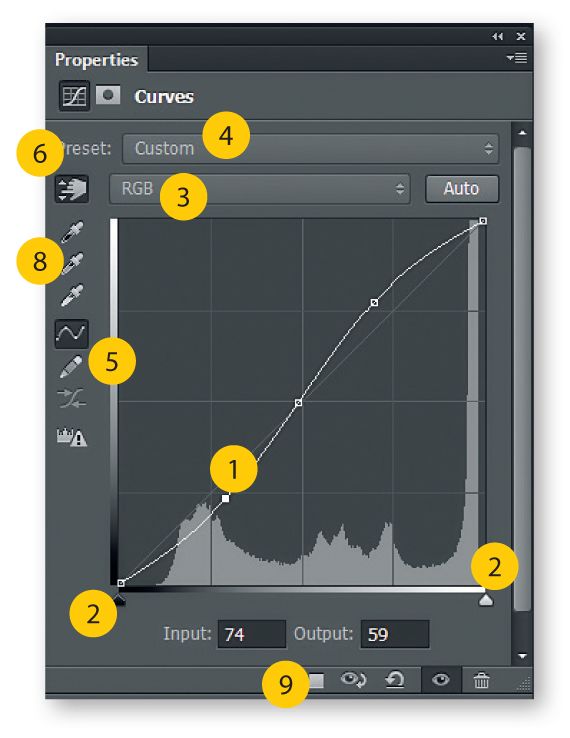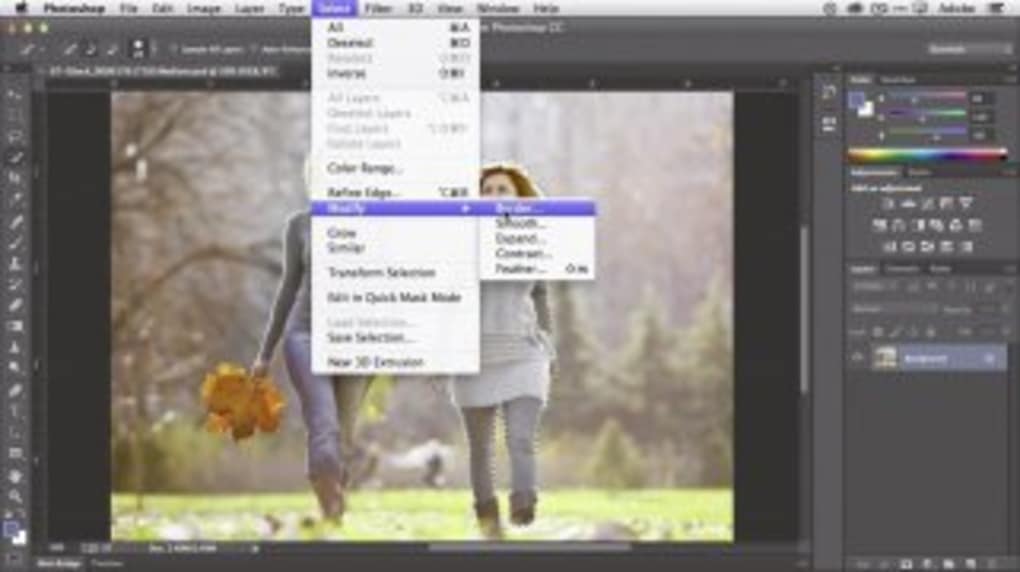
Therefore, the midtone slider's main use is to brighten or darken the midtones within an image. Movement to the left stretches the histogram to the its right and compresses the histogram to its left (thereby brightening the image by stretching out the shadows and compressing the highlights), whereas movement to the right performs the opposite. Moving the midtones slider compresses or stretches the tones to the left or right of the slider, depending on which direction it is moved. Keep in mind though that clipping shown while dragging a slider on an RGB histogram does not necessarily mean that region has become completely white - only that at least one of the red, green, or blue color channels has reached its maximum of 255. This can be quite useful because knowing where the clipping will occur can help one assess whether this will actually be detrimental to the artistic intent of the image. When the slider is dragged over where there are counts on the histogram, the regions of the image which have become clipped get highlighted as shown above. If the image is fully black while dragging a black or white point slider, then no clipping has occurred. This histogram can be extended to fill the entire tonal range by adjusting the levels sliders as shown:

The image below was taken in direct sunlight and includes both bright clouds and dark stone shadows - an example of where there should be at least some regions that are portrayed as nearly white or black. Images which do not extend to fill the entire tonal range often look washed out and can lack impact. This means that it is often best to perform levels such that the histogram extends all the way from black (0) to white (255).
#In cs3 photoshop how do i curve an image full#
Most images look best when they utilize the full range dark to light which can be displayed on your screen or in a print. When considering adjusting the black and white point levels of your histogram, ask yourself: is there any region in the image which should be completely black or white, and does the image histogram show this? ADJUSTING THE BLACK AND WHITE POINT LEVELS Levels can be performed on an individual color channel by changing the options within the "Channel" box at the top. Each slider is shown below as they appear in Photoshop's levels tool, with added blue labels for clarity:Īll examples below will use the levels tool on an RGB histogram, although levels can also be performed on other types of histograms. The position of the black and white point sliders redefine the histogram's "Input Levels" so they are mapped to the "Output Levels" (default is black (0) or white (255), respectively), whereas the midtone slider redefines the location of middle gray (128). In my case, Photoshop has already entered a value of 1.The levels tool can move and stretch brightness levels in a histogram using three main components: a black point, white point and midtone slider. Once you select "Arbitrary", Photoshop pops up the Rotate Canvas dialog box, and as we can see, all the work has already been done for us.

As I've said before, much of the problem with learning Photoshop comes from getting around the terminology, and in this case, I don't know what Adobe was thinking. We've used the Measure Tool to find out exactly how much of an angle our image needs to be rotated by, and now Photoshop can use the information we've given it to straighten our image without any guess work. We're not randomly rotating our image or leaving anything to chance. I have to laugh every time I do this because the word "arbitrary" actually means "random or by chance", yet that's exactly the opposite of what we're doing here.

Photoshop Tutorials: Go to Image > Rotate Canvas > Arbitrary.


 0 kommentar(er)
0 kommentar(er)
